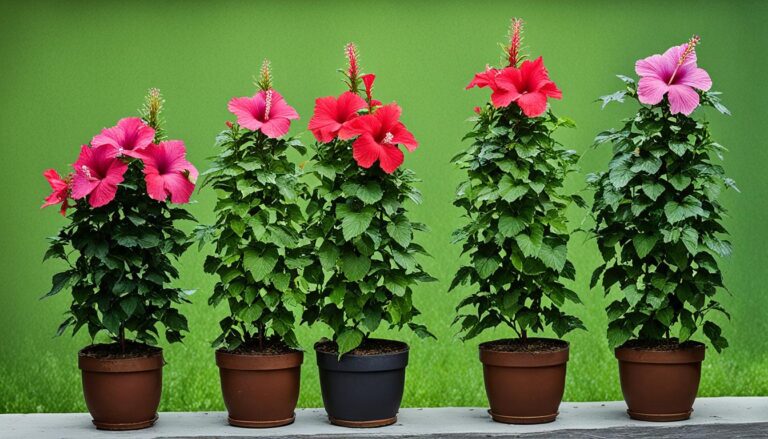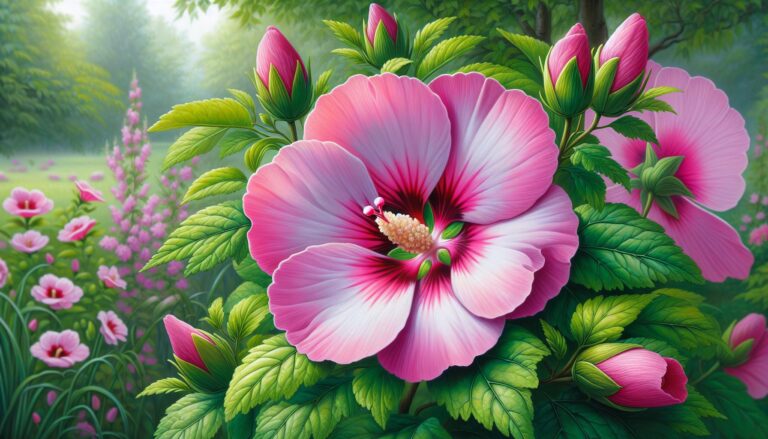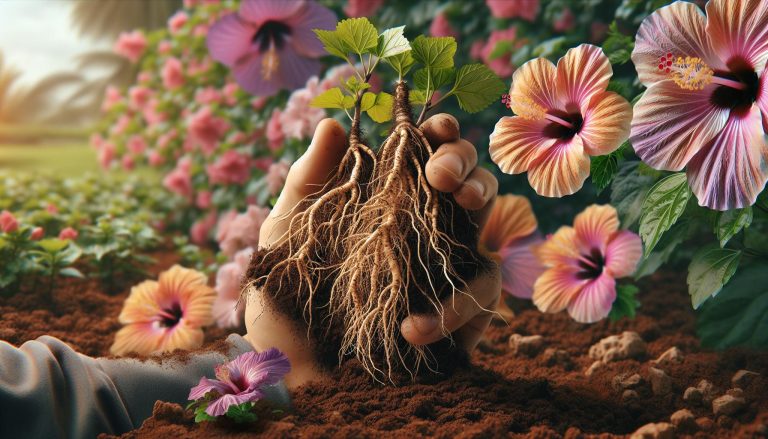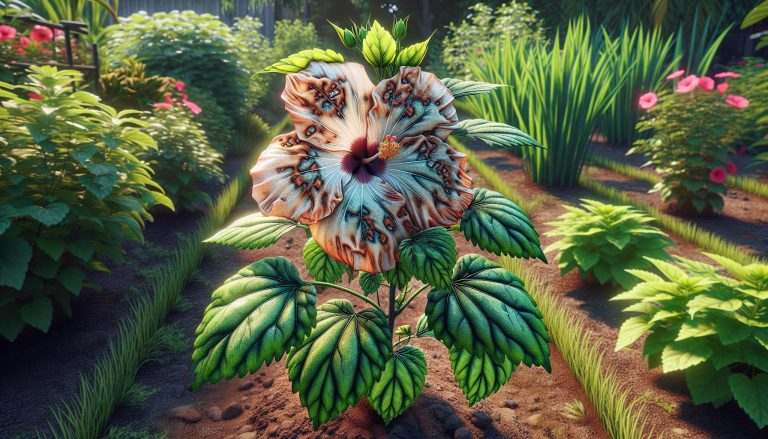Maximizing Hibiscus Growth: How Big Can Your Hibiscus Get?
When we think about adding a touch of the exotic to our gardens, hibiscus plants often come to mind with their large, vibrant flowers and lush foliage. But one question we frequently encounter is, “How big do hibiscus get?” Understanding the size and growth habits of these stunning plants is crucial for anyone looking to incorporate them into their garden or patio space.
Hibiscus can be broadly categorized into two types: perennial and tropical. Each has its unique charm and growth patterns. Perennial hibiscus species, often resembling shrubs, can die back to the ground in winter, while tropical hibiscus, with their glossy leaves and longer blooming period, are perfect for adding a splash of color to poolscapes or patios. They thrive in full sun and, depending on the variety, can range significantly in size, making them versatile additions to any garden setting.
We’ll dive into the specifics of how big hibiscus plants can get, from the compact to the towering, and how their sizes impact their care and placement. Whether you’re looking to create a tropical oasis or a perennial paradise, understanding the growth potential of your hibiscus is key to achieving your garden goals.
Key Takeaways
- Understanding Hibiscus Types and Sizes: Hibiscus plants are categorized into deciduous (hardy) and tropical varieties, each with distinct growth patterns and sizes. Deciduous hibiscus can grow into large shrubs with a robust presence in the garden, while tropical hibiscus, being generally smaller, add a splash of color especially in warmer climates or as potted indoor plants.
- Optimal Growing Conditions: For hibiscus to reach their full size and bloom potential, they require full sun, well-drained soil with neutral to slightly acidic pH, consistent moisture without waterlogging, and warmth with high humidity. Adhering to these conditions will ensure healthy growth and vibrant flowers.
- Care and Maintenance: Regular care including proper planting, sufficient watering, mulching, fertilizing, and pruning plays a crucial role in the health and growth of hibiscus plants. Ensuring they are protected from frost and implementing overwintering strategies for tropical varieties in cooler zones are also vital for their survival and thriving.
- Propagation Techniques: Hibiscus can be propagated either through seeds or cuttings. Seeds introduce genetic diversity, while stem cuttings ensure a replica of the parent plant. Both methods extend the life and vibrancy of a hibiscus collection in the garden.
- Encouraging Blooming: Ideal conditions for blooming include ample sunlight, well-fertilized and well-drained soil, and attention to pruning and deadheading. Using high-phosphorus fertilizers can also encourage more frequent and abundant blooms.
- Dealing with Common Issues: Regular monitoring for pests, diseases, and environmental stressors like
Understanding Hibiscus Size and Types
Moving deeper into the hibiscus realm, it’s essential to dissect the size variations and the types available. This understanding not only aids in selecting the right variety for your garden but also ensures you provide ample space for these beauties to flourish. Let’s explore the dichotomy between deciduous and tropical hibiscus, followed by a glance at some common varieties and their typical sizes.
Deciduous vs. Tropical Hibiscus
Deciduous and tropical hibiscus plants differ not just in their climatic preferences but also in their physical characteristics and growth patterns.
Deciduous hibiscus, often referred to as hardy hibiscus, thrive in cooler climates and lose their leaves come winter. They can astonish with their shrub-like appearance, sprouting from the ground each spring to reveal large, vibrant blooms. These varieties are resilient, capable of withstanding brief cold spells, and they tend to die back to the ground in winter, reemerging with vigor in the spring.
Tropical hibiscus, on the other hand, prefers warmer, more temperate environments and retains its glossy leaves year-round. Generally smaller than their hardy counterparts, tropical hibiscus plants add a splash of perpetual color to any setting, blooming from spring through autumn. They’re ideal for patios, balconies, or as indoor plants, where they can bask in sunlight, avoiding the chill of colder months.
Common Varieties and Their Sizes
Our exploration into hibiscus sizes wouldn’t be complete without mentioning a few noteworthy varieties. Understanding these can help gardeners set realistic expectations for plant growth and garden design.
- Hibiscus moscheutos ‘Lady Baltimore’ stands 4 to 5 feet tall and spans up to 3 feet wide, boasting light pink flowers with a striking red center.
- Hibiscus moscheutos ‘Robert Fleming’ is more compact, reaching 2 to 3 feet in both height and width, and is adorned with huge, deep velvety red blooms.
- Hibiscus moscheutos ‘Summerific Perfect Storm’ offers a slightly larger stature at 3 feet tall and 4 feet wide, characterizing dark purple foliage contrasted with large, whitish-pink flowers and a red eye.
Each variety presents a unique set of characteristics, from foliage color and flower size to overall plant dimensions, contributing distinctively to the garden’s visual appeal. Whether opting for the towering magnificence of ‘Lady Baltimore’ or the compact, rich allure of ‘Robert Fleming,’ there’s a hibiscus to fit every garden’s spatial and aesthetic needs. By selecting the appropriate variety for your climate and space, you ensure not only the plant’s health and growth but also create a stunning floral display that can captivate and charm through the seasons.
Optimal Growing Conditions for Hibiscus

Ensuring hibiscus plants achieve their full potential requires understanding their optimal growing conditions. Here, we’ll explore the essential elements including light, soil, water, as well as temperature and humidity needs. By providing these conditions, we’re setting the stage for these tropical beauties to flourish and grow to their impressive sizes, whether it’s the towering varieties reaching up to 72 inches, or the more compact forms that grace our gardens.
Light Requirements
Light plays a pivotal role in the growth and flowering of hibiscus plants. Tropical Hibiscus, thriving in full sun in northern climates, demands a minimum of 4-5 hours of direct, bright light daily, preferably from a western or southern exposure when grown indoors. However, in hotter, dryer climates, they benefit from partial shade to prevent stress and overheating. Deciduous types also flourish under full sun, needing at least 6-8 hours daily to promote healthy blooms and prevent floppy growth.
Soil Preferences
Soil quality significantly affects hibiscus health and growth. These plants prefer well-drained, neutral to slightly acidic soils, with sandy loam being ideal. For gardeners dealing with sandy soils, incorporating generous amounts of decomposed organic matter can enhance soil aeration, drainage, and moisture retention. Conversely, those battling with heavy clay soils might consider raised beds to improve drainage and prevent waterlogging. Hibiscus planted in containers thrive in a mix comprising 80% potting soil and 20% sand, ensuring the roots have access to essential nutrients while avoiding excess moisture.
Watering Needs
Hibiscus plants demand consistent, even moisture to sustain their growth and lush flowering. This is especially critical during hot, dry periods. It’s important to maintain a balanced watering schedule, allowing the soil to slightly dry out between waterings to prevent root rot. Over-watering or under-watering can stress the plants, leading to fewer flowers or even disease. Utilizing mulch can help retain soil moisture and reduce watering frequency, providing a stable environment for root development.
Temperature and Humidity
Tropical Hibiscus, as suggested by the name, enjoys warm temperatures and high humidity, thriving in environments that mimic their native tropical climates. They perform best in temperatures ranging from 60°F to 90°F and can be sensitive to sudden drops. During colder months, protecting them from frost is crucial for their survival. Deciduous hibiscus, on the other hand, can tolerate cooler conditions and are hardy in various zones, making them adaptable to a broader range of climates. Regardless of the type, maintaining adequate humidity levels, particularly for indoor plants, promotes healthy growth and flowering.
By adhering to these optimal growing conditions, we can help our hibiscus plants achieve remarkable growth and vibrant blooms, making them standout additions to our gardens or homes.
Planting and Care for Maximum Growth

Continuing from our exploration of hibiscus varieties and their optimal growing conditions, we dive into specific strategies that ensure maximum growth and vibrant blooms in your garden.
When and How to Plant Hibiscus
Planting hibiscus at the right time is crucial for their development. For perennial hibiscus, early spring marks the ideal planting period, giving the plants ample time to establish before blooming seasons. In contrast, tropical hibiscus varieties thrive when planted in late spring or early summer, once the threat of frost has passed, allowing them to enjoy warmer temperatures.
Selecting a site plays a pivotal role in hibiscus growth. A location receiving a minimum of 6 hours of full sun per day is necessary, with 8 or more hours being ideal. This ensures robust stems and prolific blooms. Soil preparation is equally important; incorporate organic matter such as compost to improve drainage and nutrient content. For tropical hibiscus in containers, a high-quality potting mix designed for moisture control can provide the best environment for growth.
When planting, dig a hole twice as wide as the root ball but no deeper, positioning the hibiscus so the top of the root ball is level with the soil surface. Thoroughly water the plant to settle the soil and eliminate air pockets.
Essential Care Tips
Regular care is the key to nurturing hibiscus plants that reach their full potential in size and floral display. Watering plays a crucial role; hibiscus require consistent moisture, especially during dry spells, but well-drained soil to prevent root rot. A 2-3 inch layer of mulch helps retain soil moisture and keeps roots cool.
Fertilization boosts plant health and bloom production. A water-soluble bloom booster, applied every few weeks during the growing season, can encourage larger, more vibrant flowers. Regularly deadhead spent blooms to promote further flowering and maintain plant appearance.
Pruning is beneficial for hibiscus health and aesthetics. In early spring, before new growth begins, prune any dead or overgrown branches to encourage a compact, bushier form with more blooms.
Overwintering Strategies
For gardeners in cooler climates, protecting tropical hibiscus during winter is essential. Before the first frost, bring container plants indoors to a bright, sunny spot where temperatures remain above 50°F. Reduce watering and stop fertilizing to allow the plant to enter a rest period.
Perennial hibiscus, with their hardier nature, don’t usually need special winter preparation in their growing zones. However, adding a layer of mulch around the base of the plant can provide extra insulation against sudden temperature dips.
By following these planting and care tips, we ensure our hibiscus plants achieve their maximum growth potential, offering stunning visual interest and a tropical flair to our gardens or indoor spaces.
Propagation Methods

After learning about the ideal conditions for growing hibiscus and ensuring they reach their full potential in terms of size and bloom, it’s crucial to understand the methods of propagation. Propagating hibiscus plants allows us to expand our garden with exact replicas or introduce genetic variation, depending on the method chosen. Here, we’ll delve into two primary propagation techniques: seeds and cuttings.
Seeds
Propagating hibiscus from seeds introduces genetic diversity into our garden, offering a delightful surprise in the variation of blooms. For those of us aiming to grow hardy hibiscus, starting with seeds is an accessible route. Begin this process 12 weeks before the last spring frost by soaking the seeds in very warm water for an hour. This step is essential to soften the seed coats, making it easier to nick them for scarification. Once prepared, sow the seeds ¼ inch deep in a seedling pot filled with a well-draining seed starting mix.
Position these pots in full sun or under grow lamps, ensuring the seedlings receive ample light to foster strong growth. About four to five weeks post germination, it’s time to transplant the seedlings into larger pots. As the last frost approaches, we start the hardening off process by gradually exposing the seedlings to outdoor conditions, thereby reducing shock when they’re eventually planted outdoors. This method can be particularly rewarding, as plants often bloom from seed in their first year, enhancing our garden’s beauty earlier than anticipated.
Cuttings
For those of us seeking an exact copy of a parent plant, especially from cultivars like ‘Lady Baltimore’ or ‘Summerific Perfect Storm,’ propagation through stem cuttings is the way to go. This method proves most effective in the spring or early summer when the plant is in its active growth phase. Begin by selecting a 3 to 5-inch long section of new growth or softwood, devoid of any flowers or flower buds. Moistening the cut end and dipping it in rooting hormone primes the cutting for successful root development.
After preparing the cutting, we insert it into a moist growing medium, being cautious not to rub off the rooting hormone. Covering the cutting with a plastic bag creates a mini greenhouse environment, maintaining warmth and humidity crucial for root development. This setup should reside in a warm location, with temperatures above 60 degrees Fahrenheit. Within about eight weeks, new leaves indicate that the cutting has established a root system and is ready for transplantation into a larger pot or direct soil after the last frost, continuing the cycle of growth and bloom in our gardens.
Through these propagation methods, we ensure our gardens remain vibrant and dynamic, filled with beautiful hibiscus varieties that flourish year after year.
How to Encourage Hibiscus Blooming

Ideal Conditions for Blooming
Identifying and maintaining the ideal conditions for hibiscus blooming is crucial to witnessing these stunning flowers in all their glory. Hibiscus plants thrive in an environment that mimics their native tropical and subtropical origins. Sunlight plays a pivotal role; thus, ensuring they receive at least 6 to 8 hours of direct sunlight daily is essential. The quality of soil cannot be overlooked; well-drained, fertile soil rich in organic matter provides the perfect substrate. We prefer to use Miracle-Gro Garden Soil for Flowers to enhance the soil’s nutrient content and structure, promoting healthier growth and vibrant blooms.
Watering is another critical aspect, especially during the blooming season. We make sure to water the plants thoroughly, allowing the soil to become moist but not waterlogged, to prevent root rot. A consistent watering schedule during the warmer months ensures the plants remain hydrated, supporting their blooming process.
Temperature and humidity are also vital, with hibiscus favoring warm days and slightly cooler nights. Protection from strong winds and extreme temperatures helps the plant to focus its energy on producing blooms rather than recovering from environmental stress.
Encouraging More Frequent Blooms
To encourage hibiscus to bloom more frequently, we focus on additional nutritional support and regular grooming. Feeding the plants with a balanced, high-phosphorus fertilizer like Miracle-Gro Water Soluble Bloom Booster Flower Food every two weeks during the growing season supports the development of buds and blooms. This specialized feeding regimen ensures the plants have all the necessary nutrients to produce flowers more abundantly and frequently.
Pruning and deadheading are equally significant in encouraging frequent blooms. We carefully prune the hibiscus plants to shape them and remove any dead or weak branches, which stimulates new growth. Deadheading, or removing spent blooms, encourages the plant to focus its energy on developing more flowers rather than producing seeds.
Additionally, ensuring the hibiscus remains stress-free is key to promoting blooms. We keep an eye out for pests and diseases, treating any issues promptly to prevent them from affecting the plant’s health and blooming capability.
By meticulously maintaining these ideal conditions and providing attentive care, our hibiscus plants reward us with an exceptional display of blooms, enhancing the beauty and vibrancy of our gardens.
Common Issues Affecting Hibiscus Size and Health
Pests and Diseases
In our experience, pests and diseases rank highly among factors affecting hibiscus size and overall health. Notably, aphids, identified for their propensity to invade new leaf or flower shoots, can significantly hinder growth. Similarly, caterpillars and grasshoppers may chew on leaves, further stressing the plants. The presence of hibiscus beetles, which feed on young flowers, often results in the dropping of flower buds before they can bloom. This pest activity not only affects the size and health of the hibiscus but also reduces its floral display.
Red spider mites pose another considerable challenge, especially under conditions of low humidity. These mites sap vital nutrients from the plant, leading to weakened growth and potential leaf drop. For combating these pests, regular cleaning of the plant or the use of insecticidal soaps proves effective.
Diseases, although less frequent, can also impact hibiscus. Root rot, caused by excessive moisture around the roots, can stunt growth or even kill the plant. Ensuring proper drainage and avoiding over-watering are critical steps to prevent such diseases and maintain plant vitality.
Environmental Stressors
Environmental factors equally influence the size and health of hibiscus plants. Insufficient light, a common issue, leads to leggy growth and reduced flowering. Hibiscus plants require a minimum of 6 to 8 hours of full sun daily for optimal growth. Too much sun without adequate water, however, can result in heat stress, evident through wilted or scorched leaves.
Temperature plays a crucial role as well. Hibiscus thrives in warm temperatures but can suffer when exposed to temperatures below 50°F (10°C), experiencing stunted growth or leaf drop. In areas with cooler climates, bringing the plants indoors during the night can help maintain a consistent temperature conducive to growth.
Water stress, whether from over or under-watering, affects hibiscus size and health. Letting the soil dry out almost completely between waterings and halting fertilization during dormancy aids in preventing issues related to water stress.
By addressing these pests, diseases, and environmental stressors, we ensure our hibiscus plants not only survive but thrive, showcasing their full size and vibrant blooms to the delight of any garden.
Conclusion
We’ve explored the vibrant world of hibiscus, from selecting the right species to mastering the art of care and propagation. It’s clear that with the right knowledge and approach, these stunning plants can reach their full potential in our gardens. By understanding the unique needs of hibiscus, including the battle against pests and environmental stresses, we can ensure they flourish, bringing a splash of color and beauty to our outdoor spaces. Let’s embrace these practices, nurturing our hibiscus plants to grow big and healthy, showcasing their magnificent blooms year after year.
Frequently Asked Questions
Do hibiscus do better in pots or in the ground?
Hibiscus plants can thrive both in pots and in the ground. It is essential to ensure proper growing conditions, though larger varieties prefer being planted in the ground to accommodate their growth needs.
What is the best month to plant hibiscus?
The optimal time to plant perennial hibiscus is during the spring. This timing allows the plants to establish a robust root system throughout the growing season, leading to more successful overwintering and regrowth.
Do hibiscus like sun or shade?
Hibiscus plants favor full sun conditions but can tolerate light shade. Keep in mind that plants receiving less sunlight will likely produce fewer and smaller blooms. Those overwintered indoors should be placed near a southern or western-facing window for adequate light.
Do hibiscus plants like full sun or shade?
Hibiscus plants perform best in full sun but can grow in partial shade, albeit with reduced growth and fewer flowers. In hot climates, providing afternoon shade can prevent stress from extreme heat.
What is the lifespan of a hibiscus plant?
The lifespan of hibiscus plants varies significantly among varieties. Traditional garden types may live up to 50 years, reaching heights of up to 15 feet. Newer hybrids often have shorter lifespans of around 5-10 years and exhibit slower growth rates.







